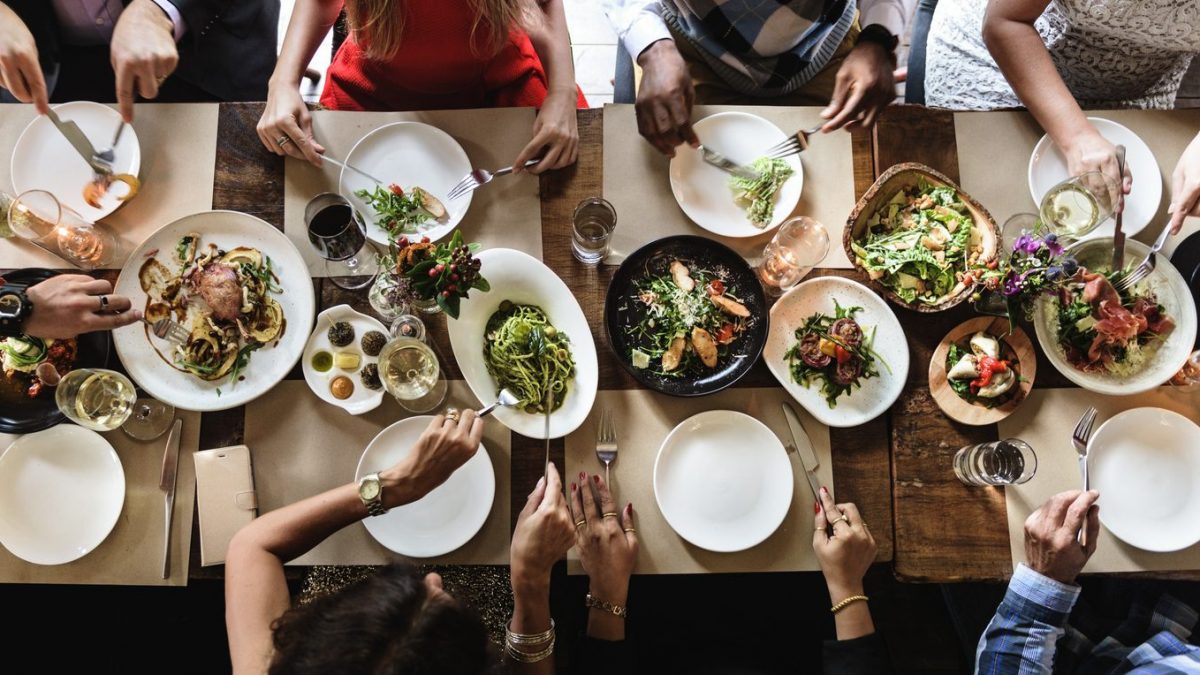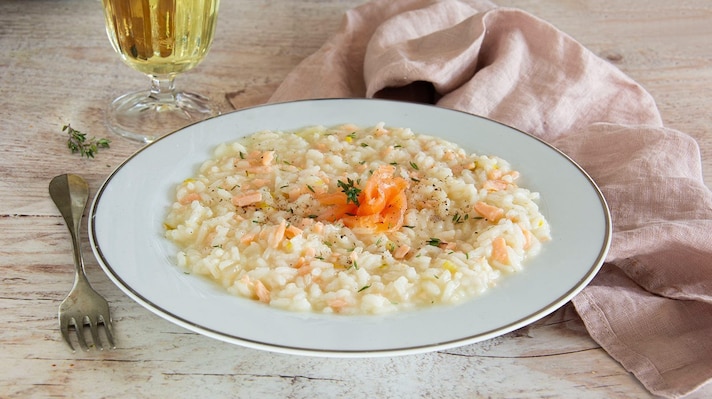
Are you planning a dinner party and have a guest with celiac disease or a gluten intolerance? Don't panic: with the right information and a little forethought, you can plan a simple, flawless, and, above all, "safe" menu for everyone. If you're not sure where to start, we suggest you read on and follow our advice.
But let's first see what the difference is between celiac disease and non-celiac gluten sensitivity? The former is a permanent intolerance to gluten, a protein found in certain grains, such as wheat, barley, spelt, and rye. It is a genetically determined autoimmune disease affecting the small intestine, and its classic manifestation is a malabsorption syndrome, including diarrhea, sudden weight loss, and fatigue.
Non-celiac gluten sensitivity is a disorder that often presents symptoms that overlap with those of irritable bowel syndrome and can be equally disabling, such as abdominal distension, flatulence, constipation alternating with diarrhea, bloating…
If you have friends with these problems, and even more so if they are celiac, you will need to pay particular attention to what you eat, planning your dishes in advance and knowing exactly what to avoid and what you can offer.
Get Informed and Plan The Menu
To make our guests with celiac disease (or intolerance) feel welcome and comfortable, it's best to first educate yourself and understand which foods are off-limits and which are permitted. Prohibited grains include wheat, including spelt and Khorasan wheat, barley and rye, and of course all their derivatives, such as flours and sweet and savory baked goods (bread, breadcrumbs, piadinas, breadsticks, crackers, rusks, taralli, pretzels, biscuits, etc.), wheat germ, bulgur, and couscous.
Although oats do not contain gluten, they are also included on the list of foods to avoid: this is because the fields where they are grown are often adjacent to wheat fields, thus presenting a high risk of contamination. However, people with non-celiac intolerances can consume them without any problems, as they would not be affected by even the smallest traces of gluten.
Seitan, or wheat muscle, also appears on the list of foods to be banned: a protein substitute often used in vegetarian diets, it is made entirely from wheat gluten. For celiac and vegetarian guests, we should instead turn to other protein sources, such as eggs, cheese, legumes, tofu, or tempeh.
Among the permitted cereals we find rice, corn – excellent for making a nice polenta – buckwheat, amaranth, millet, quinoa, sorghum, teff and tubers, such as potatoes, sweet potatoes, cassava, Jerusalem artichokes, turnips and so on.
As for proteins, green light is given to meat and fish, eggs, fresh and aged cheeses: a little extra attention should be paid to all those foods that require breading, such as cutlets, fish sticks, fried fish, or that can be floured or mixed with breadcrumbs.
After gathering all the useful information, also ask your celiac guests what they would like to eat and whether they have any preferences: this small attention will make them feel even more "pampered".

Read the Labels Carefully
To more easily navigate what you can buy and what to avoid, the best advice is to always read the labels carefully. On processed foods, which have undergone some form of modification or transformation, you should always make sure that the "incriminating" ingredients are not listed.
As we were saying, in addition to pasta and baked goods made with prohibited grains, it's important to pay attention to breaded, floured foods, or foods whose dough may contain breadcrumbs; the same goes for ready-made sauces, some cured meats and spreadable cheeses, and sauces thickened with flour.
To be absolutely sure, check the packaging of these products for the registered trademark of the "Certified Gluten Free", the symbol of the GFCO, the Gluten-Free Certification Organization, and a valuable tool for navigating the grocery store shelves.
Organizing The Kitchen
When planning your menu, also decide whether you prefer to prepare, for example, two different main dishes with the same sauce – a pasta dish and a rice dish, for example – or whether to draw up a single gluten-free menu suitable for everyone.
To avoid possible cross-contamination, especially if the celiac guest is a child, it's best to provide a single menu. If you choose the first option, plan to use separate pots, pans, and utensils, paying particular attention to any spills.
If the foods need to be cooked in the oven, place the gluten-free ones on the highest shelf and the gluten-containing ones on the lowest, and set the cooking mode to static.
Tips for Safe Cooking
Once you have planned the menu and purchased the most suitable products, it's time to get to the stove, taking due care and avoiding possible contamination:
- Before preparing gluten-free dishes, thoroughly wash your hands (this rule always applies, of course), as well as all surfaces where you'll be placing food, cutting boards, pots, and pans. It's not necessary to use special utensils: simply clean them thoroughly (both handwashing and dishwasher-safe cleaning methods ensure residue removal), and there's no need to use separate sponges.
- every time your hands come into contact with foods containing gluten, such as flour, it is a good idea to wash them;
- never use the same water in which foods containing gluten, such as pasta, have been boiled to cook gluten-free foods;
- the same goes for oil: never fry in oil used for frying foods containing gluten;
- avoid placing sheets of baking paper or aluminum foil on work surfaces that may become contaminated;
- it is possible to use the same oven to cook foods with and without gluten at the same time, avoiding the fan function and placing the trays with the gluten-free foods on the highest shelves of the appliance;
- when serving, however, we check that each bowl, salad bowl and serving plate has its own serving spoon or fork.

Menu Ideas
When it comes to appetizers, you can start with Buffalo chicken lettuce cups, where spicy shredded chicken is served in crisp romaine leaves for a lighter take on wings. A shrimp cocktail never goes out of style, especially when paired with tangy homemade cocktail sauce, while deviled eggs bring a creamy, mustard-kissed bite topped with a sprinkle of paprika for a Southern touch. If you’d like something more modern, try mini guacamole cups made with fresh avocado and served in gluten-free tortilla chip shells. For a hearty favorite, loaded potato skins baked until crisp and filled with cheddar, bacon, and chives always win guests over. Vegetarians won’t feel left out with a colorful platter of fresh vegetables served alongside a warm spinach-artichoke dip and crunchy gluten-free crackers.
Moving on to the first course, hearty soups and comfort dishes set the tone for the meal. Sweet corn chowder is a classic choice, creamy and naturally thickened without wheat flour, while butternut squash soup offers a velvety seasonal option finished with roasted pumpkin seeds for crunch. If you’re after pure comfort food, gluten-free mac and cheese made with rice or chickpea pasta delivers that nostalgic baked golden crust and gooey cheddar center. For something lighter and fresher, a quinoa salad tossed with roasted vegetables, feta cheese, and lemon vinaigrette makes a delicious gluten-free alternative to pasta salad.
For the main course, the choices are wide open. Herb-roasted chicken with crispy golden skin and fresh rosemary is a family-style favorite, while grilled salmon glazed with citrus offers a more refined touch. If you prefer bold flavors, slow-cooked beef brisket with smoky gluten-free barbecue sauce will melt in your mouth, or you can serve pulled pork sliders on gluten-free buns with creamy homemade coleslaw. For vegetarian guests, black bean burgers or sweet potato and quinoa patties topped with avocado-lime dressing provide a hearty and satisfying option. To round out the plate, side dishes like garlic mashed potatoes, roasted seasonal vegetables such as carrots, Brussels sprouts, or green beans, and a slice of gluten-free cornbread bring comfort and balance to the meal.
No dinner is complete without dessert, and there are plenty of American gluten-free classics to choose from. A rich New York-style cheesecake with a gluten-free cookie crust is always a showstopper, while a flourless chocolate cake delivers pure decadence for chocolate lovers. For a homier feel, a gluten-free apple pie filled with spiced cinnamon apples and topped with a flaky crust will please any crowd. Peanut butter cookies, naturally gluten-free when made without flour, are a quick crowd-pleaser, and warm gluten-free brownies topped with ice cream and fudge sauce turn into the ultimate brownie sundae.
To complement the meal, there are many beverage options that are safe and enjoyable for guests with celiac disease. Wine and sparkling wines are naturally gluten-free, making them easy pairings with appetizers and mains. For beer lovers, gluten-free brands such as Omission or Glutenberg provide safe alternatives. Cocktails like margaritas, mojitos, or bourbon-based drinks are also excellent choices since most distilled spirits are gluten-free. For non-alcoholic selections, consider freshly brewed iced tea, homemade lemonade, cold brew coffee, or sparkling water with fresh fruit slices for a refreshing finish.
;Resize,width=767;)
